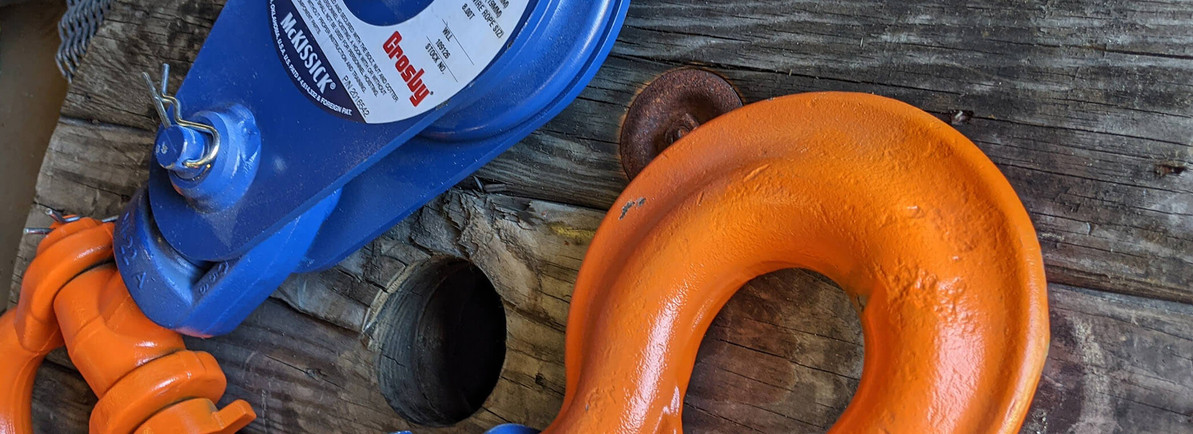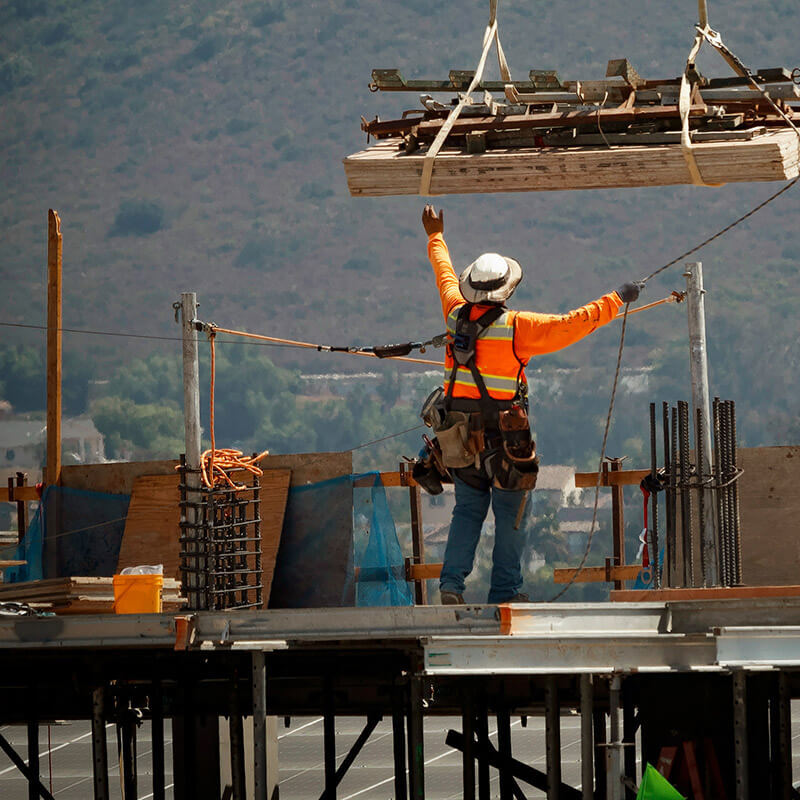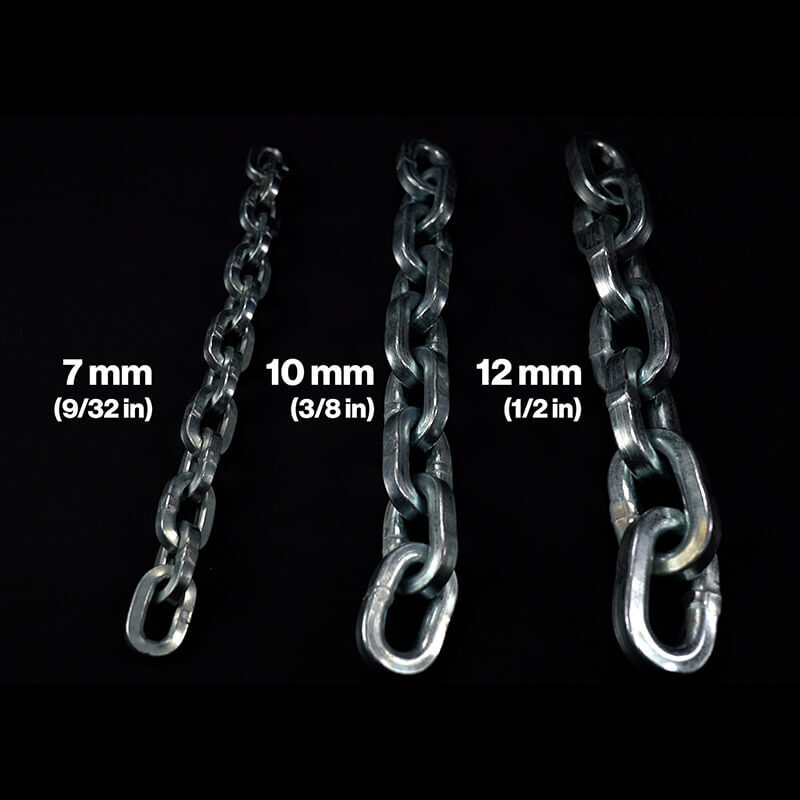What is a Snatch Block?
Snatch Blocks 101: Boosting Pulling Power and Directional Control in Rigging Operations
A snatch block is a staple in the rigging world—for good reason. Whether you're lifting, towing, recovering, or redirecting loads, this simple device can double pulling capacity, reduce equipment strain, and add critical versatility to your operation.
What Is a Snatch Block?
A snatch block is a type of rigging block with a side-opening housing that allows it to be installed mid-line without disconnecting the rope or wire rope. This makes it fast and practical in dynamic or time-sensitive environments. Most snatch blocks use durable bronze bushings to support the sheave, offering reliable performance at a lower cost. Higher-end models are available with sealed bearings for smoother operation under load—especially valuable in high-cycle or precision applications.
While the terms "pulley" and "block" are sometimes used interchangeably, there is an important distinction in professional rigging. Pulleys are typically smaller, lighter devices used in climbing, arborist work, and rope-based systems. In contrast, blocks are built for higher-load operations—featuring robust steel or aluminum housings, larger sheaves, and compatibility with wire rope. Snatch blocks fall squarely into this heavier-duty category.
Snatch Block vs. Standard Pulley
Unlike fixed pulleys or closed blocks, snatch blocks are designed with a hinged side plate that opens, allowing operators to “snatch” the block onto a loaded or tensioned line. This feature saves time and increases versatility—especially when disassembling an entire rigging setup isn’t feasible.
Core Components and Common Types
- Heavy-duty steel or aluminum housing
- Grooved sheave for wire rope or compatible synthetic rope
- Bronze bushings (standard) or sealed bearings (optional upgrade)
- End fittings: hook, shackle, swivel eye, or tailboard mount
Snatch blocks come in a range of sizes—from compact models for controlled arborist rigging to large, load-rated blocks for construction and industrial lifting. Always match the block to the rope diameter, load requirements, and connection method for safe and effective use.
Why Use a Snatch Block?
Increase Pulling Power
Snatch blocks can effectively double the pulling power of a winch or hoist by creating a two-part line. This distributes the load, reduces strain on your equipment, and enables movement of heavier loads with less effort.
Redirect the Load
Snatch blocks also allow you to safely redirect a pulling line around corners, obstacles, or into better alignment with the pulling equipment—ideal for working in tight or obstructed areas.
Industries That Rely on Snatch Blocks
- Construction: Hoisting materials, equipment, and structures
- Off-Road and Towing: Recovering vehicles in remote or difficult terrain
- Arboriculture: Redirecting lines during controlled felling or rigging operations
- Emergency Response: Moving vehicles or debris during rescue operations
- Telecom and Utilities: Lifting and tensioning lines or equipment into position
Common Sizes and Configurations
Snatch blocks are typically sized by their sheave diameter. Common sizes range from 3" to 8", and most models are designed to work with wire rope from 3/8" to 3/4" in diameter. Always consult manufacturer specs to ensure proper rope-to-sheave compatibility.
Yarding blocks, also known as toggle pin blocks, are a common and cost-effective option. These feature a toggle pin that allows the bale to open quickly, making them a popular choice for simple directional changes in logging, agriculture, and utility work. While they’re not typically lifting-rated, they’re efficient and practical for general-purpose rigging.
Leading Brands and Product Options
Crosby is the most recognized name in U.S.-manufactured snatch blocks. Their most popular models include:
- 418 Series: Snatch block equipped with a shackle
- 419 Series: Snatch block equipped with a hook
- 416 and 417 Series: Alloy snatch blocks (shackle and hook versions) for higher strength-to-weight ratio
Durabilt also offers dependable, load-rated snatch blocks at a more economical price point—ideal for contractors or job sites that don’t require Crosby-level engineering but still need reliable performance.
For those on a tight budget, we also carry imported snatch blocks. These can be a smart choice for off-road vehicle recovery or utility work where no lifting is taking place and the application is non-critical. They’re especially useful for occasional-use scenarios or “just-in-case” setups where the block may never actually see load.
Best Practices for Snatch Block Use
- Match the block’s WLL (Working Load Limit) to the application
- Use only with compatible rope or wire rope per manufacturer specs
- Inspect the block before every use—check the sheave, side plate, and bushings or bearings
- Respect D/d ratio guidelines to prevent rope fatigue (typically 4:1 or greater)
- Use properly rated rigging hardware—shackles, hooks, or slings
- Anchor only to verified, load-rated points—not vehicle bumpers or unknown structures
Safety and Compliance
Snatch blocks used in lifting or rigging should meet ASME B30.26 standards and follow applicable OSHA 1926 Subpart H guidelines. Never exceed the rated load limit, and ensure all components are inspected, clean, and free of damage or excessive wear. Improper use can result in catastrophic failure and serious injury.
Real-World Examples
Whether lifting HVAC units onto rooftops, pulling vehicles from ravines, or redirecting loads around structural obstructions, snatch blocks are a go-to solution. They’re frequently seen on cell tower construction sites, utility service trucks, recovery rigs, and in arborist kits for complex tree removals.
Shop Certified Snatch Blocks
At Lifting.com, we stock a wide selection of snatch blocks from trusted names like Crosby and Durabilt, along with value-priced imported models for non-critical or backup applications. All Crosby and Durabilt blocks are load-rated, ASME compliant, and built to perform in demanding field conditions. Browse our snatch blocks to find the right model for your job.
Frequently Asked Questions
What is a snatch block?
A snatch block is a rigging block with a side-opening housing that allows mid-line insertion of rope or wire rope. It's used to increase pulling capacity and safely redirect loads.
How does it differ from a standard pulley?
In rigging terms, pulleys are lighter-duty tools used in climbing and rope systems. Blocks—especially snatch blocks—are built for heavier-duty applications and are typically used with wire rope. The key feature of a snatch block is its ability to open on the side for quick mid-line attachment.
What components make up a snatch block?
Key components include a grooved sheave, heavy-duty housing, bronze bushings or sealed bearings, and end fittings like hooks or shackles.
Does a snatch block actually double pulling power?
Yes. When rigged with a two-part line, a snatch block splits the load, reducing strain on your winch or hoist and effectively doubling pulling capacity—assuming proper configuration and anchoring.
Can I use a snatch block to change direction?
Absolutely. Snatch blocks are ideal for redirecting force when a straight-line pull isn’t practical. This improves both safety and efficiency in real-world rigging setups.
What sizes are most common?
Most snatch blocks range from 3" to 8" in sheave diameter and are designed to work with 3/8" to 3/4" wire rope. Always match block specs to your rope size and load requirements.
What are yarding or toggle pin blocks?
These are lower-cost snatch blocks with a toggle pin bale opening mechanism. They're widely used in logging, utilities, and light rigging. While not lifting-rated, they’re highly efficient for directional changes and tensioning tasks.
How do snatch blocks improve safety?
They reduce equipment stress, allow more controlled handling of loads, and provide critical flexibility in rigging systems. When properly rated and maintained, they’re an essential safety tool on any job site.
What Is the 10-Foot Rule for Rigging?
Dec 15th 2025
What Are the Different Types of Climbing Ropes?
Dec 11th 2025
What Type of Rope Is Best for Climbing?
Dec 9th 2025
What Are the Two Types of Kernmantle Rope?
Nov 25th 2025
What Is a Kernmantle Rope Used For?
Nov 21st 2025
What Is a Fall Protection Harness?
Nov 14th 2025
What are the four components of a PFAS?
Nov 7th 2025
Is Palmer Safety OSHA Compliant?
Nov 3rd 2025
What’s the Hardest Chain to Cut?
Oct 20th 2025










